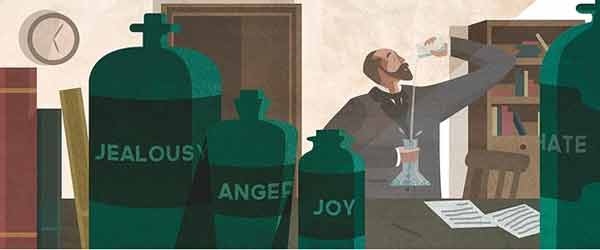
London, UK (BBN)-When the new Pixar movie Inside Out was released, a multitude of psychologists popped up to debate its portrayal of emotions, which appear as five characters – Anger, Fear, Sadness, Joy and Disgust – inside the mind of an 11-year-old girl.
I found the debate strange. To be sure, there’s much to ponder in the film’s message that negative emotions have their value, and that emotions can aid decision-making, rather than just getting in the way, reports Guardian.
Yet none of the experts mentioned the dirty secret at the heart of the study of emotions.
They don’t discuss it in interviews. But get chatting to a psychologist on his or her third whiskey, at a lonely bar on the outskirts of town near closing time, and you might finally hear the truth, which is that no one really has a damned clue what an emotion is.
If you doubt this, recall a recent time you felt sad or frightened or angry or anxious, and ask yourself: what was that?Clearly, an emotion must be more than a mere thought: it’s easy to think about something that’s theoretically scary without feeling scared.
And it must be more than a physical sensation: when I’m anxious, my stomach tightens – but my stomach tightens when I’ve eaten bad seafood, too, and that’s not anxiety.
Yet, when you subtract both the thought and the sensation, nothing seems to be left, as William James noticed back in 1884.
Can you imagine the emotion of rage, say, while imagining “no flushing of the face, no dilation of the nostrils, no clenching of the teeth, no impulse to vigorous action, but in their stead limp muscles, calm breathing, and a placid face?”
James wrote in his essay What Is An Emotion?. “The present writer, for one, certainly cannot.”
Somehow, the emotion itself, as distinct from thoughts or sensations, has gone missing in action.
And despite vast strides in psychology and neuroscience since then, it’s never quite been located.
In one classic experiment that demonstrates how slippery emotions are, participants were given a drug that raised their heart rates, but only some were told this would happen.
Then they spent time with a stooge whose comments were scripted to induce annoyance.
Those who knew the drug’s effects blamed it for their pumping hearts, but many of the others labelled what they were feeling as anger.
More recently, scholars have wondered if emotions are “natural kinds” at all – that is, whether, in our brains, there’s a single category of thing to which joy, fear, sadness, etcetera, all belong, except insofar as we’ve decided there is.
It’s a bit unnerving: we spend millions trying to fix our emotions – via therapy, books, medications and more – yet it’s not remotely clear what we’re trying to fix.
Or perhaps, to adopt a perspective echoing Buddhist psychology, it’s not unnerving but deeply reassuring?
After all, if there’s nothing to emotions except sensations plus thinking, it follows that nothing you could ever experience in life, no matter how terrible, will ever be anything more than a bunch of thoughts, plus a few physical sensations.
And you can probably handle that.
BBN/SK/AD